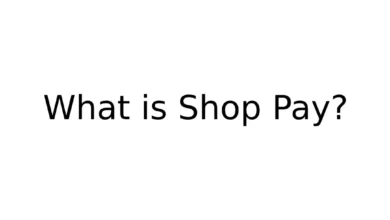How To Solve Formula Parse Error In Google Sheets

As in any field that deals with work and manipulation of data in spreadsheets, ease of use and time saving is the order of the day. Google Sheets has evolved to be among the most useful platforms for analysts and spreadsheet users owing to the rich functionalities. However, one typical problem that seem to be troublesome at one time or the other is the formula parse error. What makes this post is that it will cover these errors to ensure that you get tangible tips and ways to overcome them as you work with Google Sheets.
In this post, we will discuss the different formulas parse errors, the different possible causes for their occurrence and the procedures to follow to solve these problems. Before you finish this article, therefore, you should be able to tackle any hiccup that may come with formula, and thereby set a more efficient course for data analysis.
Understanding Formula Parse Errors
Google Sheets formula parse errors arise when the application fails to comprehend or implement a formula that a user types in. Such errors can prove irritating most especially at that time when one is working on a particularly important data analysis exercise. The first thing you can do to address them is to know what it is and why it happens.
There are various reasons that could cause parse errors, below are some of the common ones?
As indicated in formula (A), parse errors may result from a number of problems. Some common causes include:
Syntax Errors: Symbol misuse, misuse of reactivity operators or function names.
Reference Errors: Referring to a cell that has an invalid or “deleted” status.
Typographical Errors: Those small mistakes, actually, make the formulas look quite different.
Knowledge of these causes assists in the identification of mistakes, and their correction in the shortest time possible.
It is however important to note that formula parse errors could be of the following types:
At times, Google Sheets offers unique error messages that inform users about the type of error encountered.
#ERROR!: This is a general error that applies when incorrect syntax is used or the function is called wrongly.
#REF!: Special character in cell reference or cell was deleted.
#N/A: Some values are not available or are absent.
Fixing Syntax Errors
Formula parse errors can be Syntax errors which are the most commonly encountered types of mistakes. It happens in moments where there is a problem with the architecture or style of your formula.
In this type of culture, it is essential that there are measures in place to assure the proper utilization of the symbols involved.
Where they are appropriate, such as in parentheses, commas, quotation marks and the like, their use should be correct. For example, an ‘Undefined’ formula may result from a closed parenthesis in the middle of a formula. It is also important to verify the formula to ensure that the various symbols are well utilised in the formula.
Correcting Function Names
A very typical error involves typing the wrong or incorrect name of the function being called. Google Sheets will not react to a function per se if it is misspelled. Check that the name of the function you typed in your formula is the correct one and corresponds to the one Google Sheets supports.
Example: Resolving Defect Where Operational Cause Is the SUM Function
Suppose you’re trying to sum a range of cells but encounter an error:Suppose you’re trying to sum a range of cells but encounter an error:
“`plaintext
=SUM(A1:A10
“`
The one thing which is missing here is the closing parenthesis. Correcting it to:
“`plaintext
=SUM(A1:A10)
“`
will resolve the error.
Addressing Reference Errors
A reference error is one that occurs when one’s formula contains one or more references to cells that no longer exist or which have been deleted. Such mistakes can creep into your calculations and seize your flow, making outcomes quite off the mark.
Checking Cell References
Make sure that all the cell references used in the formula are correct and reachable from the formula in the cell. Formula: Check if the cells you might have deleted or moved recently are indicated here, if so update it.
An accurate method of referencing that is employed in emphasizing the structure of the worksheet and ease of making numerous changes is the use of Absolute and Relative references.
A little distinction between the two can clarify the matter – in most of the cases absolute references are used. Some of the major types include, the absolut references like $A1 to $C2, relative references such as A1 or C2.
Example: Fixing a #REF!Error
When you come across a #REF !If you get an error message, it means your formula is pointing to a non-existent cell in your spreadsheet. For example:
“`plaintext
=SUM(A1:B10, C1:C10)
“`
“`plaintext
=SUM(A1:B10)
“`
will fix the issue.
Handling Typographical Errors
Typos can easily go unnoticed and that can lead to formulas not being understood & mistakes. These errors can be eradicated by focusing on the figures and checking them twice.
Verifying Formula Components
Ensure that each component of the formula is accurate. Make sure that the names of the functions are written correctly, the references to the cells, and the operators.
Utilizing Auto-Complete Features
Google Sheets also has an auto-complete suggestion feature that displays suggestions as you type. You can benefit from it to make sure you are not typing wrong letters and do not misuse functions.
Example: Correcting a Typo in VLOOKUP formula
“`plaintext
=VLOKUP(A1, B1:C10, 2, FALSE)
“`
Correcting the typo to:
“`plaintext
=VLOOKUP(A1, B1:C10, 2, FALSE)
“`
will resolve the error.
Understanding Error Messages
Google Sheets gives particular error messages which can be used to accurately determine the problem with the formula. Such messages should be understood as they help one to correct mistakes with ease.
#ERROR!
The #ERROR!a message that requests to enter some URL indicates a general syntax or function usage error. Go over the patterns with the typical syntax errors that you should check, including missing parentheses or wrong function names.
#REF!
The #REF!message indicates an Invalid cell reference. Find out that your formulae contains references to deleted or non-existent cells and modify them.
#N/A
This means that when you come across the #N/A message it indicates that there is a missing value or the value is unavailable. It is common with lookup functions especially when the searched value is not found to be in the list.
Using Error-Handling Functions
Google Sheets provides functions to manage mistake politely and effectively. It should also be noted that these functions can enhance the reliability of your spreadsheets and avoid interruptions in your work.
IFERROR Function
The IFERROR function gives you the chance to define a value that will be returned if the formula provides erroneous data. This can stop overlay of error messages that interrupt your calculations, from emerging.
“`plaintext
=IFERROR(VLOOKUP(A1, B1:C10, 2, FALSE, “Not Found”.
“`
ISERROR Function
The ISERROR function checks whether a value is an error or not, and gets either TRUE or FALSE as a result. It can also be applied together with other equations to control how errors are accessed or processed.
“`plaintext
=IF(ISERROR(VLOOKUP(A1, B1:As mentioned in the foregoing section, cells’ values include C10=2; FALSE. POS=FALSE with C10=2, Error=Value Found.
“`
Example: In order to avoid the previous error, which is the division by zero error, the command IFERROR can be used.
If you’re dividing two numbers and want to avoid a division by zero error:If you’re dividing two numbers and want to avoid a division by zero error:
“`plaintext
=IFERROR(A1/B1, “Error”)
“`
It is going to give back the string “Error” instead of giving back a formula error.
Debugging Complex Formulas
If a formula comprise of different functions or references, it can be tough to debug particularly if the formula is complex. To address this problem with errors, to attempt to see the source of the errors, to break the formula down.
Breaking Down the Formula
If possible, try testing each segment of the complex formula separately to determine if any one of the segments is the cause of the problem. This approach can guide you to where the error is most likely to be and has been in previous experiences.
Using the Formula Bar
Usually the formula bar in Google Sheets is shown and you can just change the different parts other than the cell reference with ease. Use it to review and edit the formulas that have been used in calculations for the cartilage.
Example: Constructing a Nested IF Statement
“`plaintext
IF(A1 > 10, ‘High’, IF(A1 > 5, ‘Medium’, ‘Low’))
“`
“`plaintext
=IF(A1 > 10, “High”)
=IF(A1 > 5, “Medium”)
“`
In this way, you can test all parts and as a result, you find the error that is wrong.
Avoiding Common Pitfalls
It is possible to follow certain steps that will prevent formula parse errors in the first place. Having exposure to such pitfalls and the use of best practices helps in improving your experience in the use of spreadsheets.
Keeping Formulas Simple
While more complex SL formulas are often effective, using simpler SL formulas can help to avoid the complications that can be difficult to diagnose. In an ideal world, formulas should be kept simple and therefore it is recommended that one avoids making them complex.
Documenting Your Formulas
To avoid frequent rewriting and confusion concerning the formulas’ purpose and their execution, it is wise to make comments or notes. It is most effective when applied to a shared context This strategy is most appropriate when it is being applied in a common environment.
Regularly Reviewing Your Spreadsheets
To avoid the instances where the error build up over time, it is advisable to periodically go through the spreadsheets and make the necessary correction. Ensure that you schedule some of your precious time to go through your formulas and data occasionally.
Leveraging Google Sheets Support
There are several ways in Google Sheets to assist you in diagnosing and solving formula related issues on the platform. To improve the value of your work and build up your skills, it may be useful to use such resources.
Help Center
Google Sheets Help Center is well-stocked with documentation and guidelines for every formula and function. I also like that it helps in identifying and diagnosing errors that may occur during the operation of a program.
Community Forums
Video tutorials are available and there are online forums like Reddit with specific sections where people ask questions and others provide answers or show solutions.
Example: Using Community Support
Visit the Google Sheets Help Center, where you can find information about similar problems.
If you want individual help regarding your query, then submit your question in a community forum.
Conclusion
Understanding formula parsing errors in Google Sheets is crucial for any data analyst or user of spreadsheet applications. So, by identifying frequent causes of mistakes, using error-checking functions, and turning to support materials, you and your employees can work more efficiently and improve your data analysis performance.
Read Also: 15 Best AI Landing Page Builders for 2024



